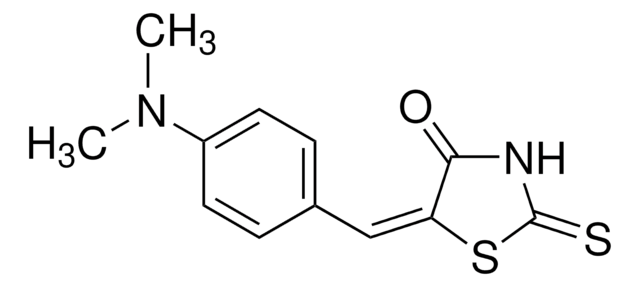70340
Naphthensäure
technical
Synonym(e):
Acidol (petroleum by-product), Sunaptic B
Anmeldenzur Ansicht organisationsspezifischer und vertraglich vereinbarter Preise
Alle Fotos(1)
About This Item
Empfohlene Produkte
Qualität
technical
Form
liquid
Säurezahl
~215
Dichte
0.92 g/mL at 20 °C (lit.)
SMILES String
OC(=O)CCC1CC(CC1)CC
InChI
1S/C10H18O2/c1-2-8-3-4-9(7-8)5-6-10(11)12/h8-9H,2-7H2,1H3,(H,11,12)
InChIKey
WVRFSLWCFASCIS-UHFFFAOYSA-N
Anwendung
Naphthenic acid is commonly used in the synthesis of useful metal naphthenates such as copper naphthenate, a wood preservative; titanium naphthenate, a precursor for the preparation of titanium oxide thin films and a rare earth naphthenate, a lubricant oil additive. It can also be in the synthesis of biodegradable naphthenic acid ionic liquids.
Hinweis zur Analyse
Erdölprodukt; techn. Gemisch aus alkylierten Cyclopentancarbonsäuren
Signalwort
Warning
H-Sätze
Gefahreneinstufungen
Eye Irrit. 2 - Skin Irrit. 2 - Skin Sens. 1
Lagerklassenschlüssel
10 - Combustible liquids
WGK
WGK 1
Flammpunkt (°F)
213.8 °F - closed cup
Flammpunkt (°C)
101 °C - closed cup
Persönliche Schutzausrüstung
Eyeshields, Gloves, type ABEK (EN14387) respirator filter
Hier finden Sie alle aktuellen Versionen:
Besitzen Sie dieses Produkt bereits?
In der Dokumentenbibliothek finden Sie die Dokumentation zu den Produkten, die Sie kürzlich erworben haben.
Kunden haben sich ebenfalls angesehen
David Jones et al.
Journal of chromatography. A, 1247, 171-175 (2012-06-19)
The naphthenic acids of oil sands process-affected water (OSPW) are said to be important toxicants. The major acids are stated to have alicyclic structures and recently, numerous of these have been identified, but some evidence suggests 'aromatic' acids are also
Steven D Melvin et al.
Environmental pollution (Barking, Essex : 1987), 167, 178-183 (2012-05-12)
Naphthenic acids (NA) have been identified as harmful environmental contaminants that influence survival, growth and development of wildlife. Amphibian larvae are particularly susceptible to waterborne contaminants, but little information exists regarding exposure of amphibian embryos or tadpoles to NA. Our
Lan Liu et al.
Chemistry (Weinheim an der Bergstrasse, Germany), 18(38), 12059-12067 (2012-08-16)
The interactions between 3-O-methyl-mannose polysaccharides (MMPs), extracted from Mycobacterium smegmatis (consisting of a mixture of MMP-10, -11, -12 and -13) or obtained by chemical synthesis (MMP-5(s), -8(s), -11(s) and -14(s)), and linear saturated and unsaturated fatty acids (FAs), and a
Atefeh Afzal et al.
Environmental science & technology, 46(19), 10727-10734 (2012-09-01)
The large volume of oil sands process-affected water (OSPW) produced by the oil sands industry in Northern Alberta, Canada, is an environmental concern. The toxicity of OSPW has been attributed to a complex mixture of naturally occurring acids, including naphthenic
Effects of naphthenic acid exposure on development and liver metabolic processes in anuran tadpoles.
Steven D Melvin et al.
Environmental pollution (Barking, Essex : 1987), 177, 22-27 (2013-03-08)
Naphthenic acids (NA) are used in a variety of commercial and industrial applications, and are primary toxic components of oil sands wastewater. We investigated developmental and metabolic responses of tadpoles exposed to sub-lethal concentrations of a commercial NA blend throughout
Unser Team von Wissenschaftlern verfügt über Erfahrung in allen Forschungsbereichen einschließlich Life Science, Materialwissenschaften, chemischer Synthese, Chromatographie, Analytik und vielen mehr..
Setzen Sie sich mit dem technischen Dienst in Verbindung.










